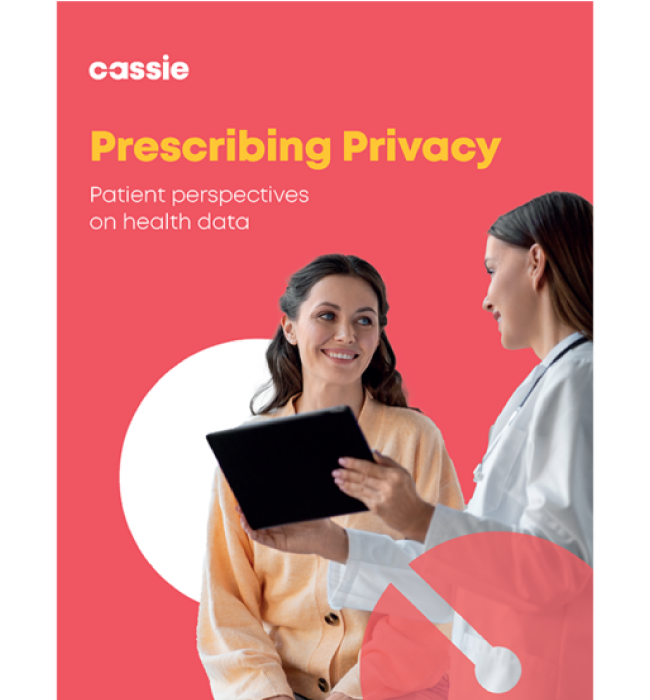Understanding the different types of consent in US healthcare
Posted: August 14, 2023
Consent codes and laws are meant to protect both healthcare providers and care receivers. Consent on the provider side prevents misunderstandings and lapses in communication, thereby ensuring legal and ethical practices; on the receiver side, it builds trust in the provider and ensures respect for autonomy.
Shifting away from the old practices of consent, the emergence of new types of consent as a legal requirement reflects the evolution in complexity of medical treatments, social norms towards patient autonomy, and the advancement of medical technology.
Consent nowadays presupposes competence in decision-making and includes the crucial elements of disclosure, understanding, and voluntariness. With continuous refining and expansion in the scope of consent being introduced, let’s explore its varied types and how to strike a balance between patient autonomy and the provider’s responsibility for each.
Overview of types of consent
Informed consent
Informed consent acts as the cornerstone of the patient-provider relationship. Informed consent empowers patients with the right to make informed decisions about their medical care and to make voluntary decisions about their participation in research.
It ensures that patients are well informed about the risks, benefits, and complications of the proposed intervention and have admitted to their comprehension of the information provided. The acknowledgment demonstrates the patient’s agreement to carry on with the recommended procedure voluntarily.
Under US jurisdiction, the concept of informed consent is enshrined under both federal and state laws.
Federal laws and regulations include:
- The Common Rule, also known as the Federal Policy for the Protection of Human Subjects, primarily applies to research-oriented matters. It may not directly apply to healthcare settings, but when a healthcare provider conducts research within a clinical setting based on observational studies or community-based interventions, the Common Rule applies
- The Food, Drug, and Cosmetic Act (FD&C Act) mandates developers and marketers of drugs and medical devices to obtain informed consent from all participants in clinical trials, including minors and individuals with diminished capacity
- The Health Insurance Portability and Accountability Act (HIPAA) sets standards for the collection, use, and disclosure of protected health information (PHI). It requires healthcare entities to obtain informed consent from patients before sharing their PHI for research or marketing
> Navigate HIPAA compliance with our free checklist <
Some state laws across the US that require obtaining informed consent include:
- California Medical Consent Act (MCLA)
- The New York Public Health Law in New York
- The Illinois Informed Consent Act
- The Texas Medical Practice Act
- The Florida Patient Protection Act
Note: This is not an exhaustive list.
Implied consent
When consent is not expressly granted by patients but rather assumptions are drawn from a person’s actions and circumstances in a particular situation, such cases comprise implied consent. For example, if a person meets an accident and falls unconscious, In this case, although the person can’t expressly grant consent for treatment, healthcare professionals can proceed to provide medical treatment to that person.
Situations when implied consent is typically applied:
- When a healthcare provider is familiar with a patient’s vital signs and the procedure is routine or customary
- When a person can’t provide express consent due to incapacity, consent could be assumed to provide medical treatment
How to balance patient autonomy and provider responsibilities for implied consent?
- Before making an assumption, providers should ethically gauge the patient’s level of understanding of the proposed procedure and their communication abilities. If the patient is unable to communicate, the nearest relatives should be contacted to make decisions on their behalf
- Whenever possible, during the course of treatment, providers should try their best to get verbal confirmation from the patient. It strengthens the assumption of implied consent
- Providers should practice reducing reliance on implied patients and strive to obtain the explicit consent of the patient for a documented understanding of the patient’s agreement
Expressed consent
Expressed consent and informed consent are often used interchangeably, but they have distinct meanings and roles in the patient-provider relationship.
While informed consent is about informing patients about the possible risks and complexities in connection with something before they proceed with a proposed intervention, express consent refers to a specific method or form of obtaining consent.
Expressed consent involves agreeing to a proposed action through a written or verbal statement after a thorough comprehension of the information shared by the provider.
How can healthcare providers strike a balance between patient autonomy and the provider’s responsibilities for expressed consent?
- Educate patients with detailed and understandable information about the proposed intervention, including risks, benefits, complications, alternatives, etc
- Allow patients to comprehend the knowledge and take their time to make a voluntary decision without coercion or pressure
- Document the process of obtaining consent by getting written or verbal confirmation of the patient’s agreement to undergo intervention.
Assent and pediatric consent
The concept of consent in pediatric settings remains a complex issue, often confusing clinicians and researchers about which consent they should obtain in cases involving minors. Since children do not have the same moral weight as adults, they are considered incapable of making decisions on their own and, therefore, providing consent.
Regulations require both parental permission and obtaining assent from the potential child subject in this case. While parental permission protects the child from assuming unreasonable risks, assent demonstrates respect for the child and his developing autonomy.
Striking a balance between patient autonomy and provider’s responsibility for assent consent:
- Providers should tailor their communication to meet the child’s age and developmental level, including making use of language that is jargon-free and easy to comprehend
- Children should be encouraged to participate in the decision-making process by asking questions and expressing their thoughts and concerns
- Parents should be involved to learn the values, preferences, and cultural background of the child
- Whenever the child’s decision conflicts with their best interest, reasons for overriding their assent and providing alternative solutions should be explained to them and documented accordingly
Special cases – emergency and surrogate consent
When obtaining informed consent from patients may be challenging or impossible, such cases account for emergency or surrogate consent.
In emergency situations, patients may be incapacitated, unconscious, or unable to communicate their wishes. Emergency consent in this case comes to the rescue for both patients and providers. It allows providers to presume consent and take immediate action to address the patient’s urgent medical requirements.
Providers should document the rationale for presumed consent, the circumstances of emergency consent, the medical condition of the patient, and the steps taken.
When a patient lacks the capacity to provide informed consent and delaying treatment poses a serious risk to the patient’s life, providers can engage surrogate decision-makers to make decisions on their behalf. The inability to make informed decisions could be due to the medical condition of the patient, language barriers, cognitive impairments, etc.
Surrogate decision-makers are appointed by patients themselves or designated by the law to make healthcare decisions in the best interests of patients. An authorized individual can be a family member, legal guardian, or healthcare power of attorney.
To strike a balance between patient autonomy and healthcare provider’s responsibilities:
- Healthcare professionals should thoroughly communicate with the surrogate to assess their understanding of the patient’s values and preferences
- Even if the patient is not in a position to express their preferences, providers should make every effort to involve the patient in the decision-making process
- It’s advisable to scoop insights from a patient’s past medical history and involve the surrogate to reach a common decision
Conclusion
In an evolving legal landscape where expectations of patients for respecting their rights are on the rise, careful comprehension and application of the consent process are a must.
Additionally, understanding the different types of consent is crucial to fostering trust with patients. Knowing where one applies and the pertinent strengths and flaws of each can help providers strike a balance between their responsibilities and patient autonomy.

Download our ‘Prescribing privacy’ research report
We spoke with US consumers to explore customer trust and the level of confidence that consumers have in the healthcare system’s ability to safeguard data.
This report also covers:
- How news-reported data breaches impact consumer emotions
- How they evaluate healthcare providers for data security
- Actions that healthcare providers can take to build customer trust whilst challenging the complexities of data privacy

